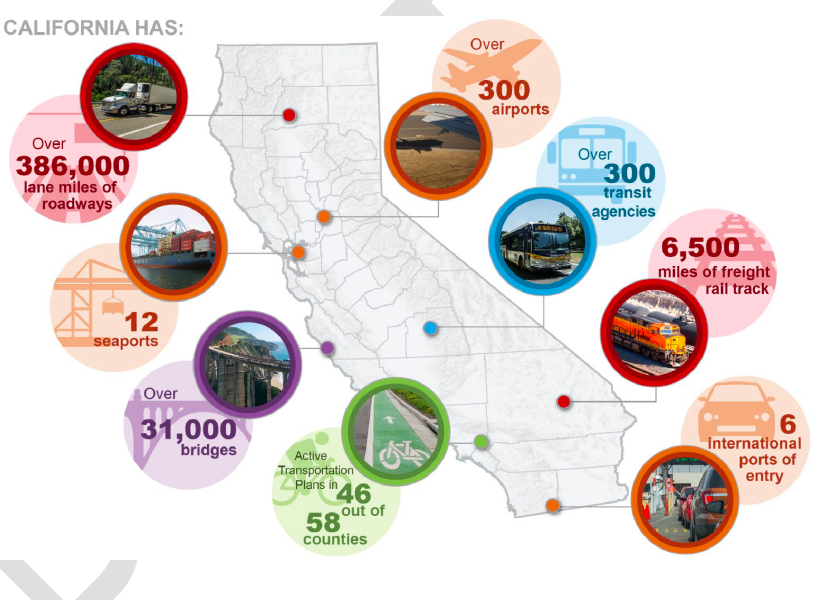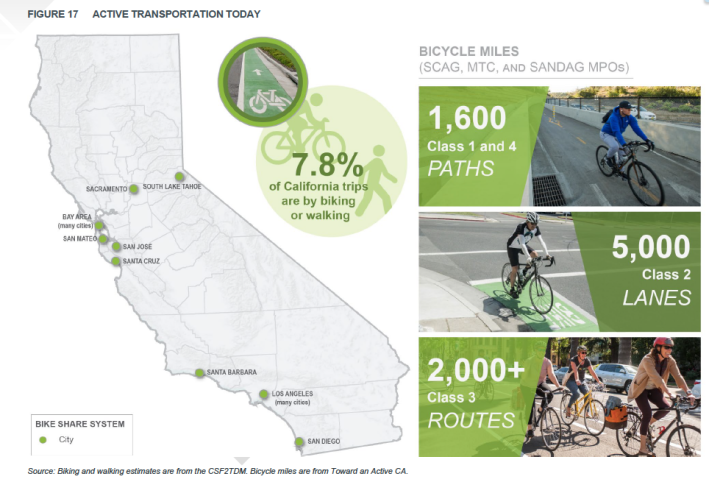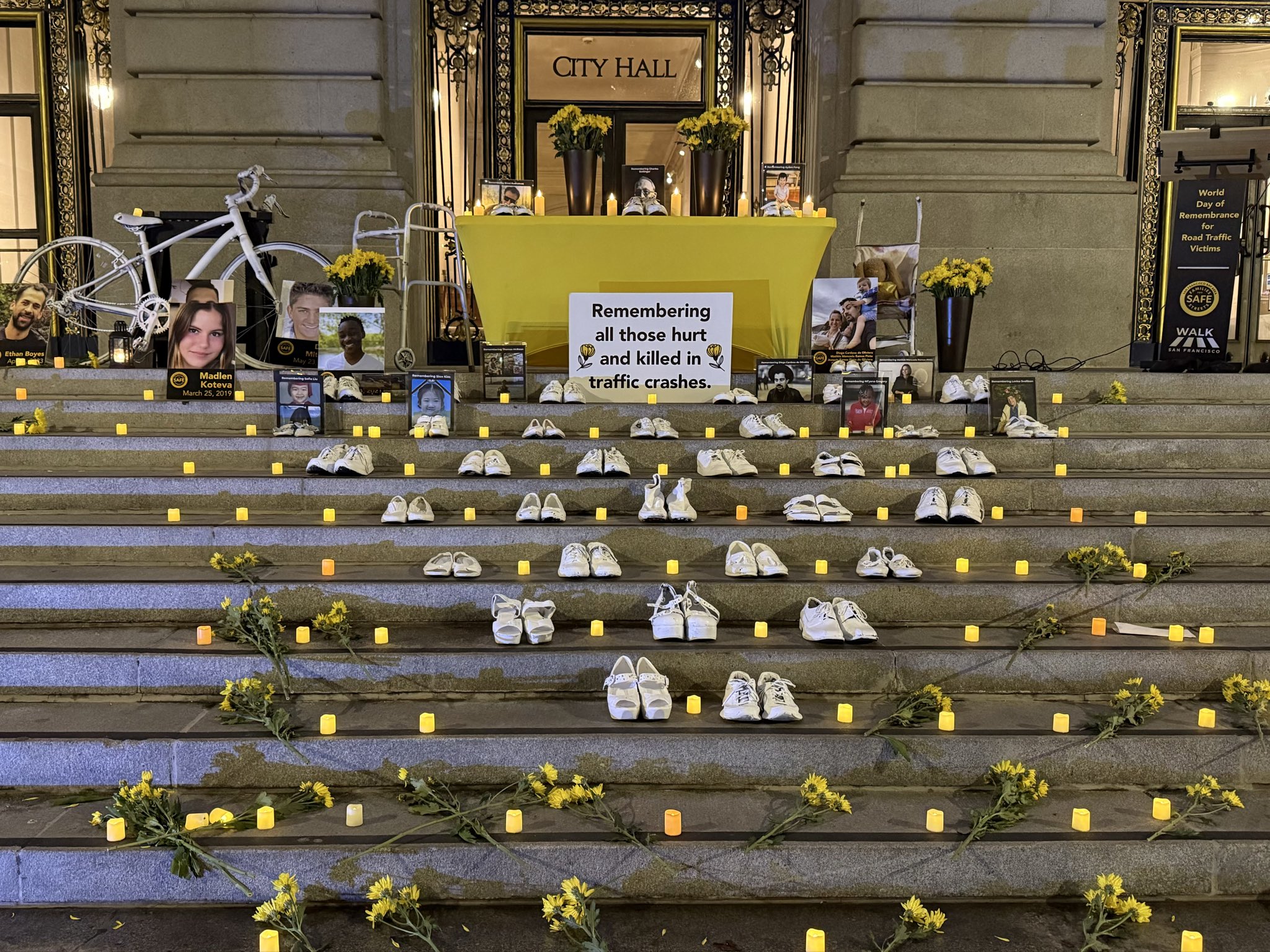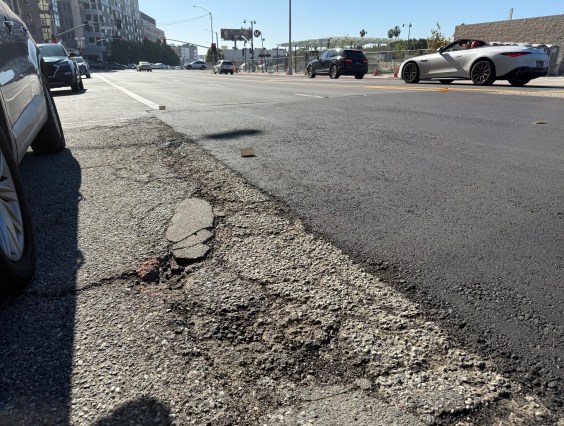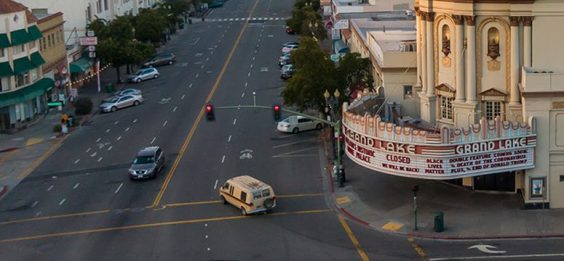Note: GJEL Accident Attorneys regularly sponsors coverage on Streetsblog San Francisco and Streetsblog California. Unless noted in the story, GJEL Accident Attorneys is not consulted for the content or editorial direction of the sponsored content.
A draft update to the California Transportation Plan has been released for public comments, which are due by October 22 and can be submitted here.
The plan forms the underlying framework for transportation planning throughout the state, and should inform decisions about where to put scarce funding. But since transportation is linked to pretty much every aspect of life and livability in the state, the plan must address its connections to health, equity, safety, resilience, and access.
It puts forth a worthy vision of the future of California transportation:
“California’s safe, resilient, and universally accessible transportation system supports vibrant communities, advances racial and economic justice, and improves public and environmental health.”
But this update of the CTP stops short of emphasizing what that previous plan made clear: that California has to stop building and expanding transportation infrastructure that solely focuses on cars.
It's hinted at. The focus on equity implies it. The plan addresses problems like induced demand, the historical practice of building freeways through low-income neighborhoods, displacement, and the need to reduce VMT and free people from auto dependency. It discusses what modeling can and cannot do for planning. For example, it addresses induced demand - in which adding additional highway lanes results in additional traffic - but then simply skips looking at "new major roadway expansions because such enhancements conflict with state goals of reducing VMT." That's good, sort of.
In its discussion of equity, the plan states:
We must identify and reform... transportation policies that perpetuate injustice, such as highway and freight planning and traffic enforcement. The CTP 2050 also calls for correcting historic transportation decisions by actively prioritizing resources, support, and funding for communities who have endured the greatest burdens of the transportation system, and who continue to lack safe, convenient, and affordable mobility options.
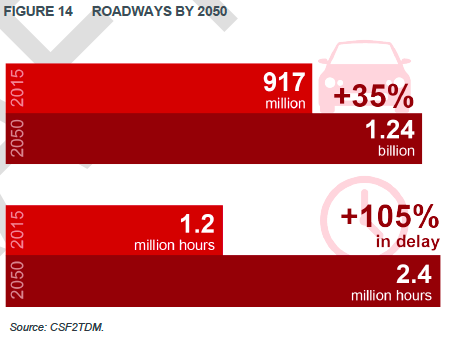
California is still building and widening highways, and still pushing forward decades-old plans to destroy houses to increase freeway capacity, so actually coming out and saying "California must stop building freeways, especially through communities where people live" would have been helpful.
It's always a good idea to use this plan, and others like it, to remind planning agencies that they are supposed to abide by them.
Below, find a completely opinionated summary of some of the good things in the California Transportation Plan 2050.
It has a broad scope, as mentioned above, but the fact that it acknowledges the profound impact the transportation system has on everybody's life is important. "Adapting this system to better serve the people of California will directly benefit the health, safety, and resilience of our communities," says the plan.
California’s path toward a more safe, sustainable, and accessible transportation system will be difficult, but the benefits will be profound. If implemented, the CTP 2050 will reduce transportation-related GHG emissions, free millions from auto dependency, advance transportation equity, and improve quality of life for Californians.
But "to achieve these benefits, we must address many critical challenges facing our state: economic recovery, resilience to future disruptions, addressing the housing shortage and growing inequality, preparing for a rapidly changing climate, and navigating the uncertain effects of new and emerging technologies."
It's a heavy lift, but not rising to the challenges would be a huge mistake.
But the plan is also a framework, not an actual plan for getting it done. Once it is adopted, Caltrans will develop an Implementation Element to identify actions, agency responsibilities, implementation steps, and timelines.
But it's important also to note that the CTP is a financially unconstrained document which does not identify the funding and resources to actually implement it. The Implementation Element is supposed to start that process.
Below are some - not all - of the recommendations the CTP is putting forward.
Expand remote access to jobs, goods, services, and education. This is happening under COVID shutdowns anyway, but is uneven and disorganized. Telecommuting is not the solution for reducing travel, but it needs to be one of the tools towards the solution.
Expand access to safe and convenient active transportation options. This includes several specific recommendations, including to expand funding for active transportation, prioritize and require complete streets in road projects, and identify priority actions in existing plans such as the state active transportation plan (Toward an Active California).
The plan also recommends making active transportation projects easier by simplifying permitting and help local governments try out things like "slow streets."
Improve transit, rail, and shared mobility.
Advance transportation equity. "Transportation decisions have directly contributed to racial and economic injustice," the plan acknowledges. "The profound impacts of redlining, highway expansion, and exclusionary zoning have left Black and brown communities with fewer housing and transportation options; lower access to jobs, services, healthy food, and recreation; and heightened exposure to air pollution and traffic incidents. Many of these impacts are furthered through redevelopment, gentrification, and displacement—which continue to occur throughout California communities."
Specific actions recommended under this category include:
- Launch a comprehensive statewide effort to identify and reform existing transportation policies that uphold racial and economic injustice, including traffic enforcement practices
- Prioritize investments in disadvantaged communities to improve mobility and access to jobs, education, health care, services, and recreation. Ensure that investments are aligned with community-identified transportation needs and paired with anti-displacement policies
- Establish a statewide advisory committee tasked with expanding action around racial equity and transportation. Task the committee with developing a racial equity analysis framework to guide investment decision-making
- Support local agencies in linking anti-displacement policies such as tenant protections, affordable housing production, and affordable housing preservation to transportation investments
Enhance transportation safety. Specific recommendations include to improve public outreach to better understand and address varying transportation safety needs across race, ethnicity, age, income, gender, sexual orientation, and ability, promote infrastructure design that enhances safety for vulnerable, and reducing driving speeds through infrastructure design.
It's important to note, on that last point: many engineers working for Caltrans and other agencies still do not believe this is possible, although it may be that ongoing training efforts within that department are slowly having an effect. For fifty years, highway engineers have strongly pushed the idea that the proper way to design for safety is to widen, straighten, and smooth roads, with the result that drivers assume their mistakes will be absorbed by the infrastructure, and they can pay less attention to their speed or their driving. This one statement - "reduce driving speeds through infrastructure design" - is kind of revolutionary, in a state plan anyway.
The plan includes related recommendation, which has also been difficult to get past the engineer and enforcement powers that guard the gateway: to reduce speed limits "by repealing the 85th percentile speed limit rule and enabling local transportation agencies to establish lower speed limits."
The plan also recommends creating state oversight on autonomous vehicle development, price roadways, encourage efficient land use - including reducing parking minimums or enacting parking maximums, require multimodal project components when roads are being upgraded, and align highway funding with VMT-reducing projects.
The draft CTP 2050 addresses many more topics, including transit, air travel, goods movement, mode trends, and more. It is a rich picture of the current state of transportation in California, taking into account unknowns resulting from COVID, and detailing current efforts to solve multiple problems faced by California's transportation system. It's worth a deep perusal.
And if you like webinars, there was one recorded in September which can be accessed here.
Submit comments on it here, by October 22.
